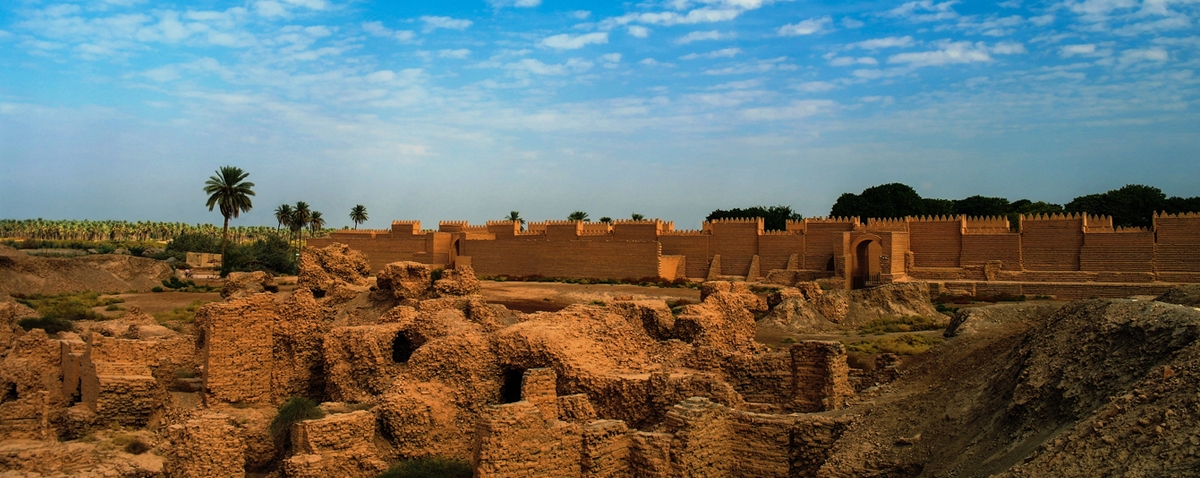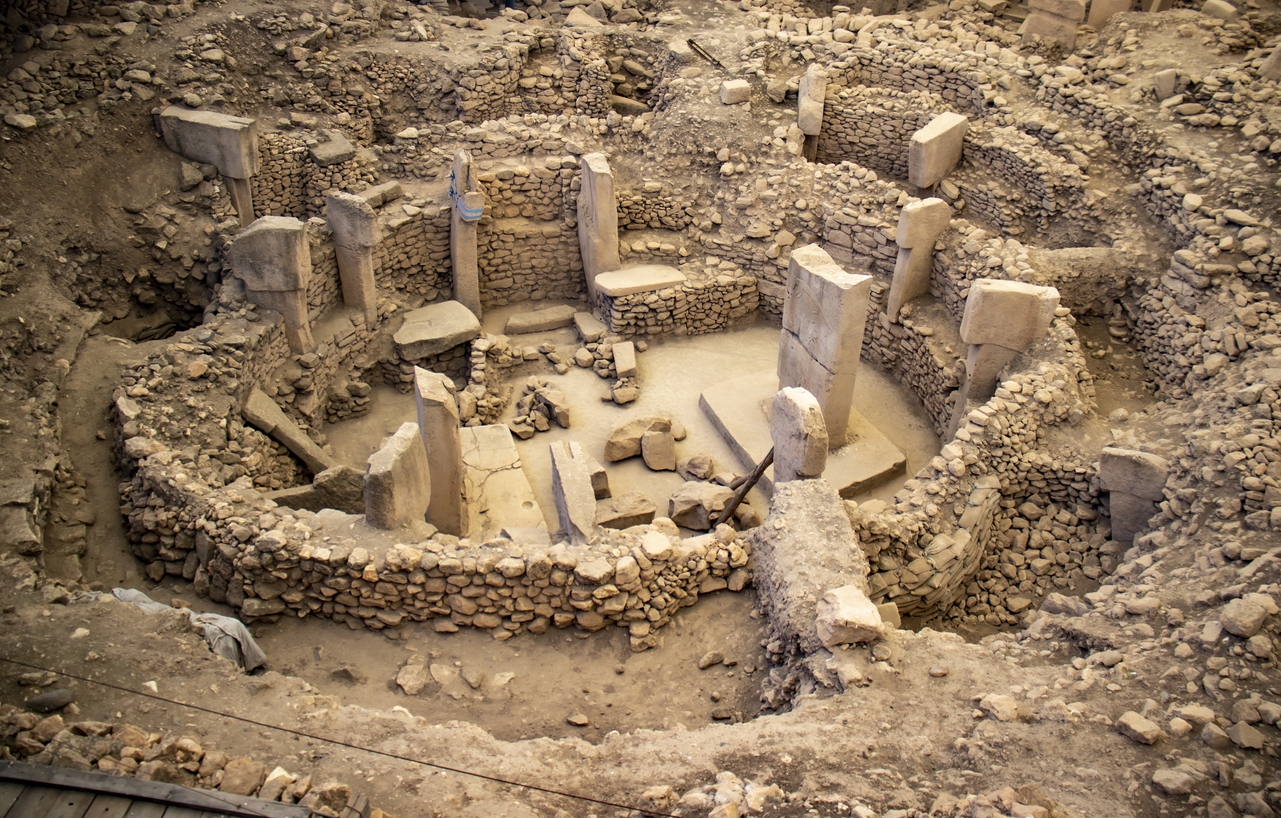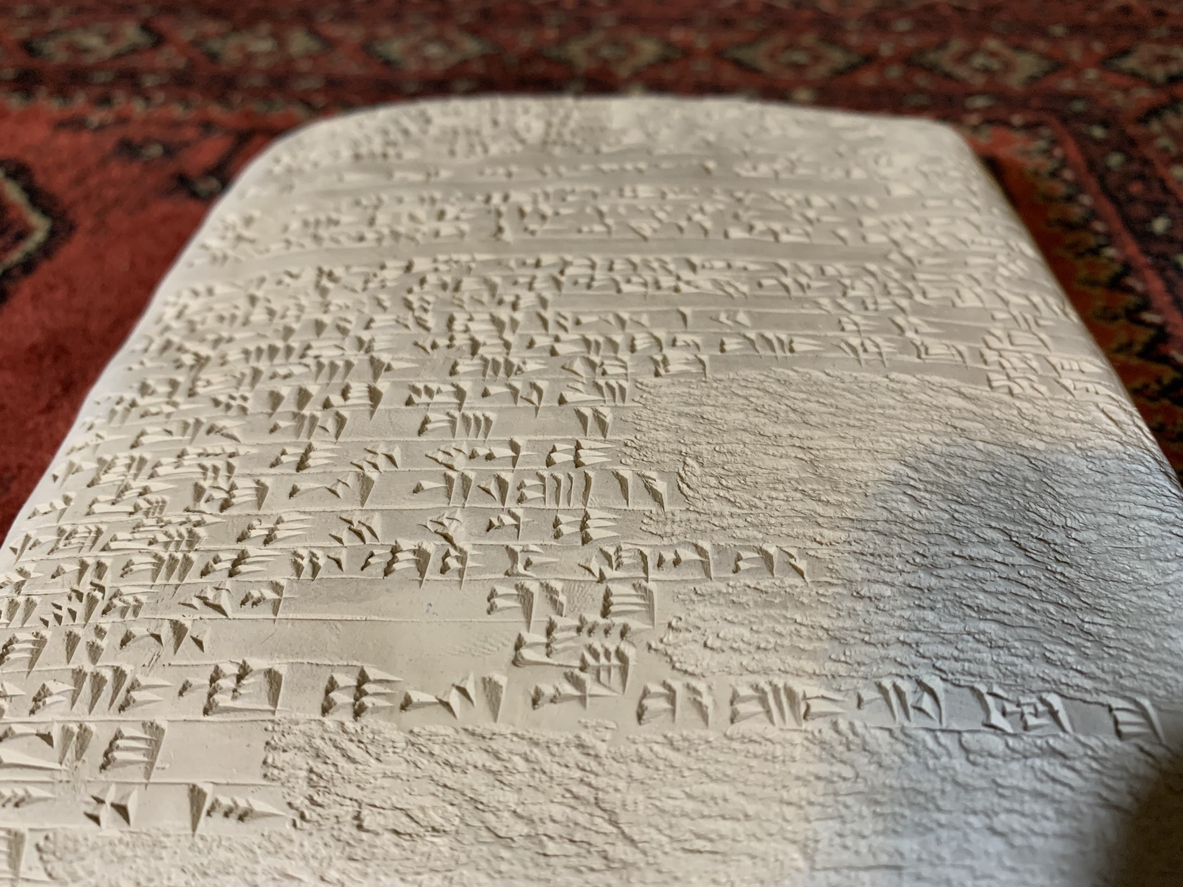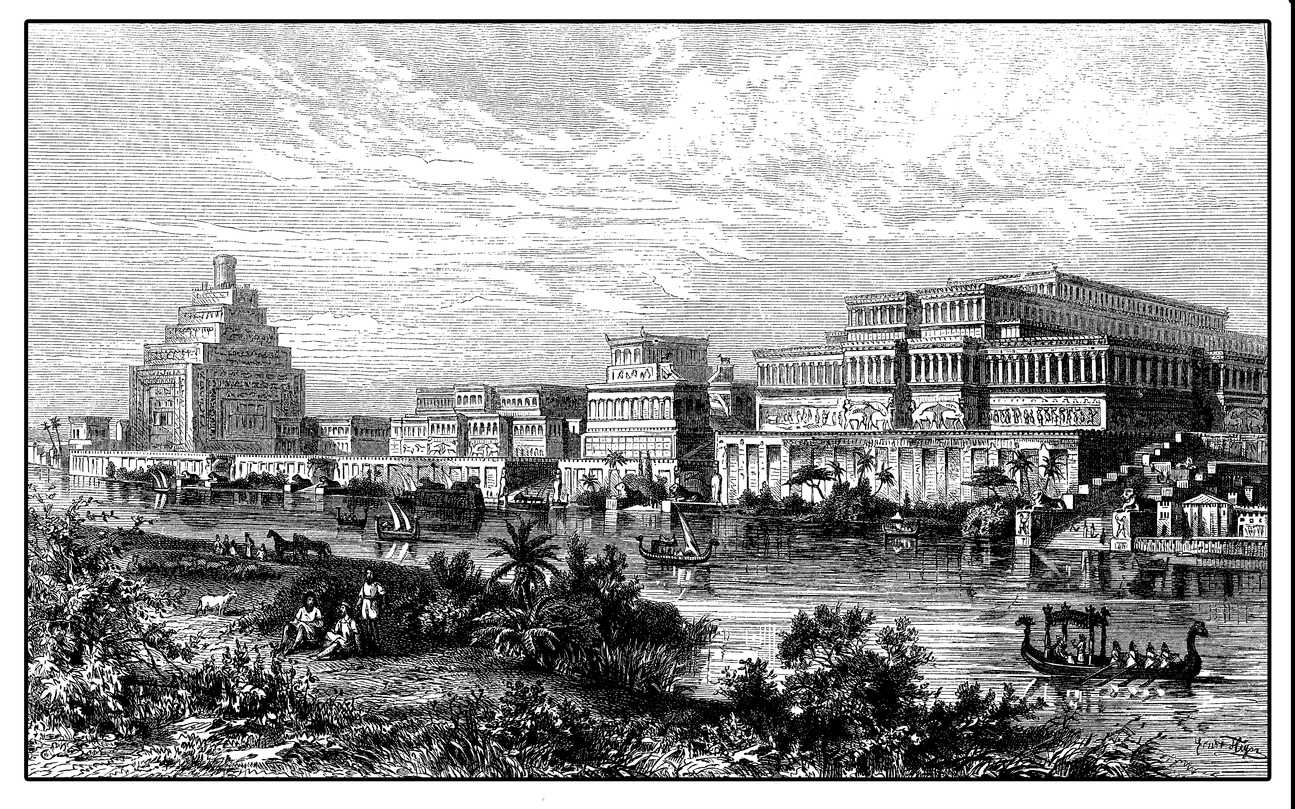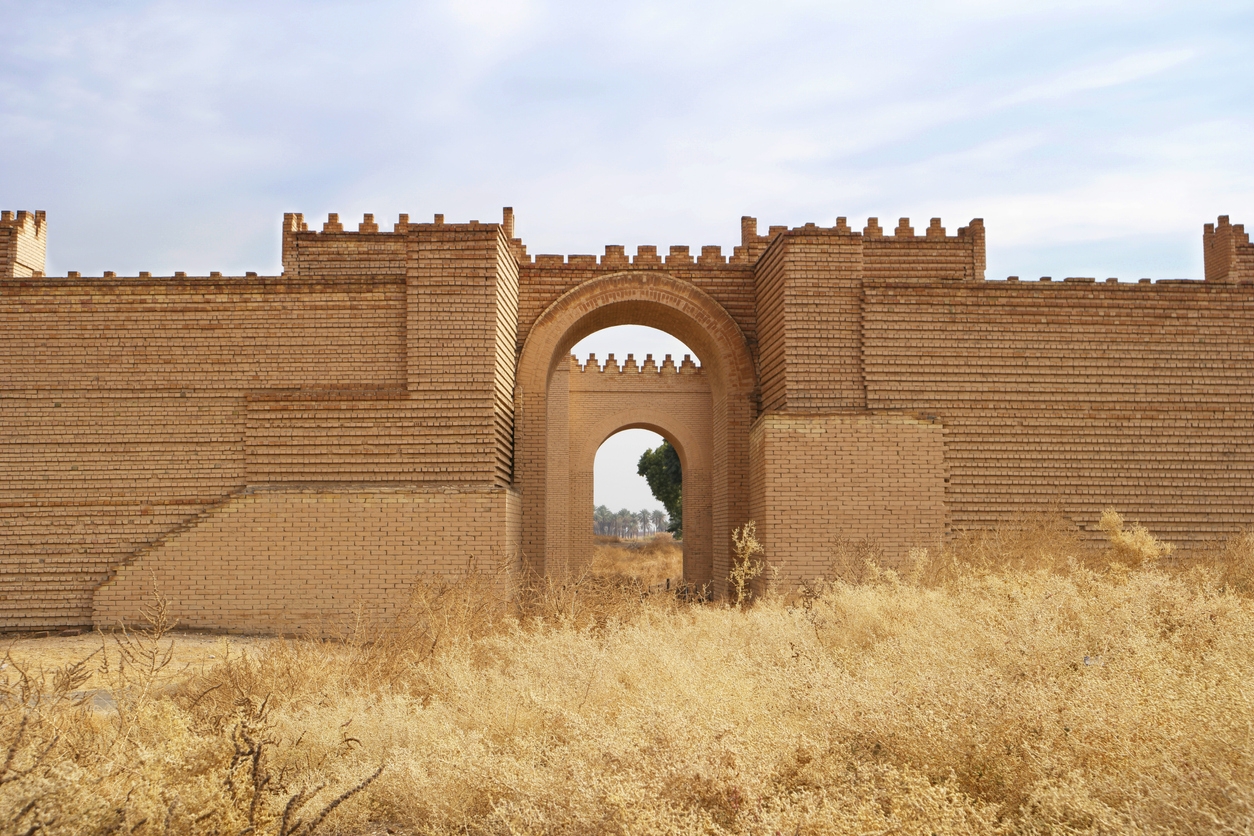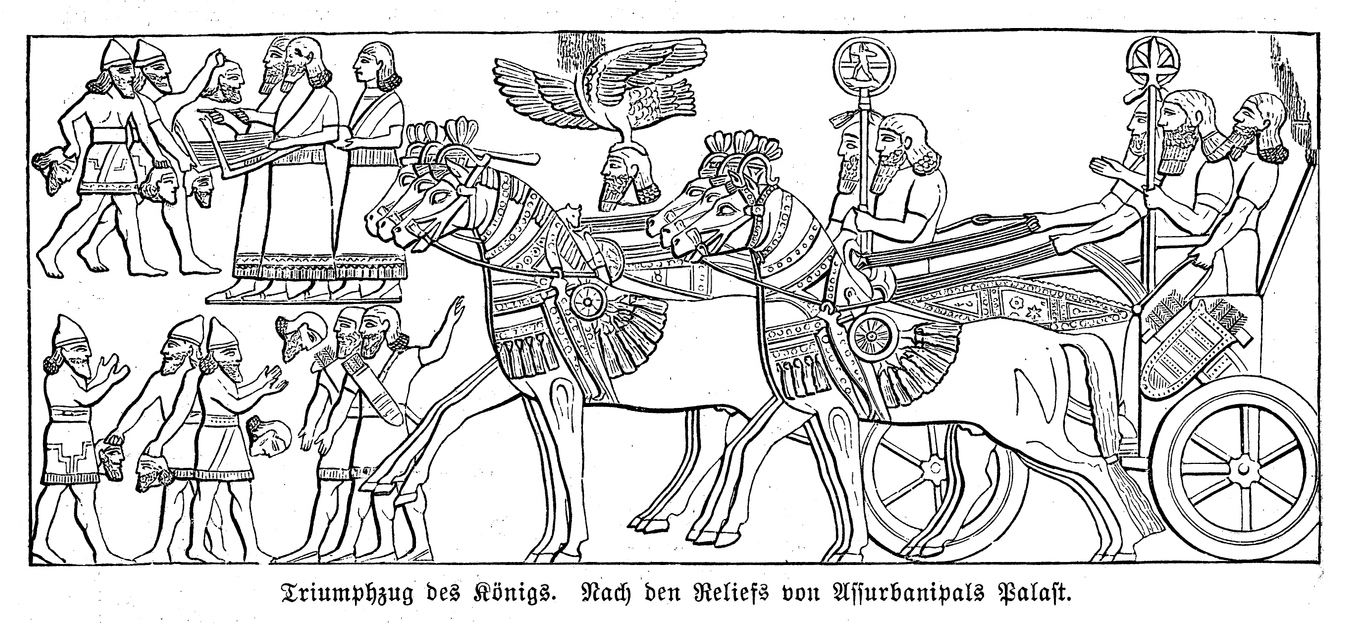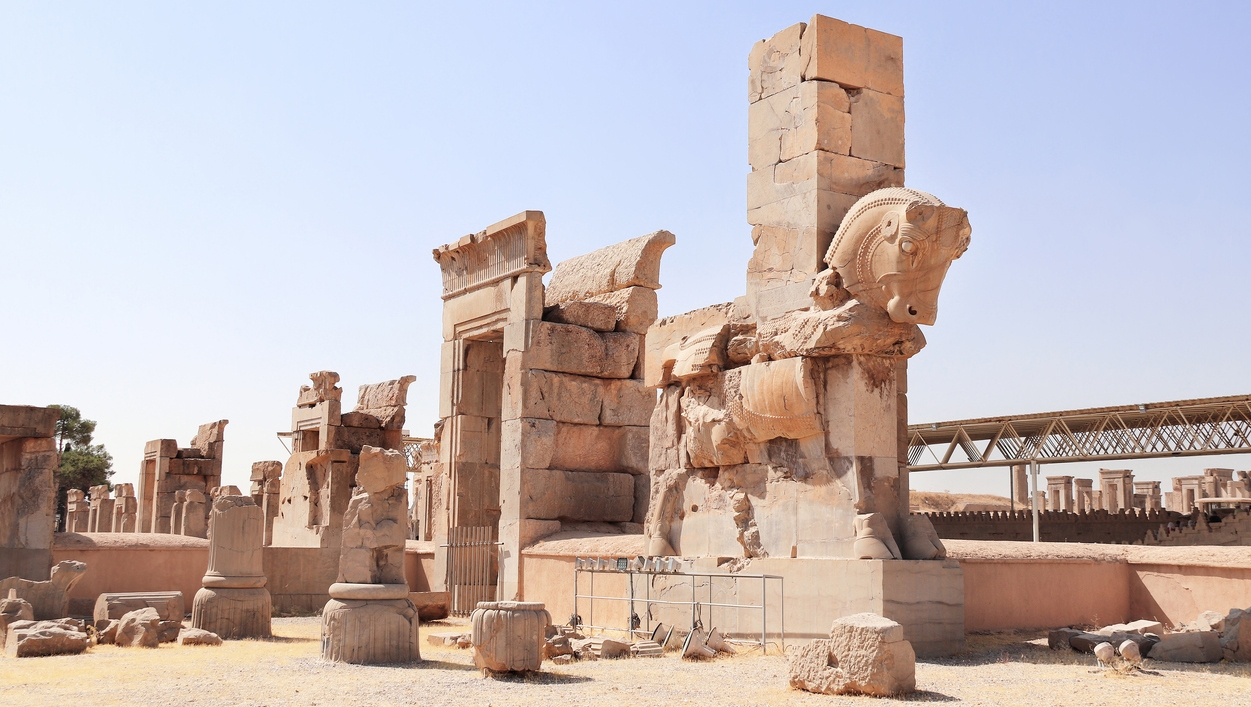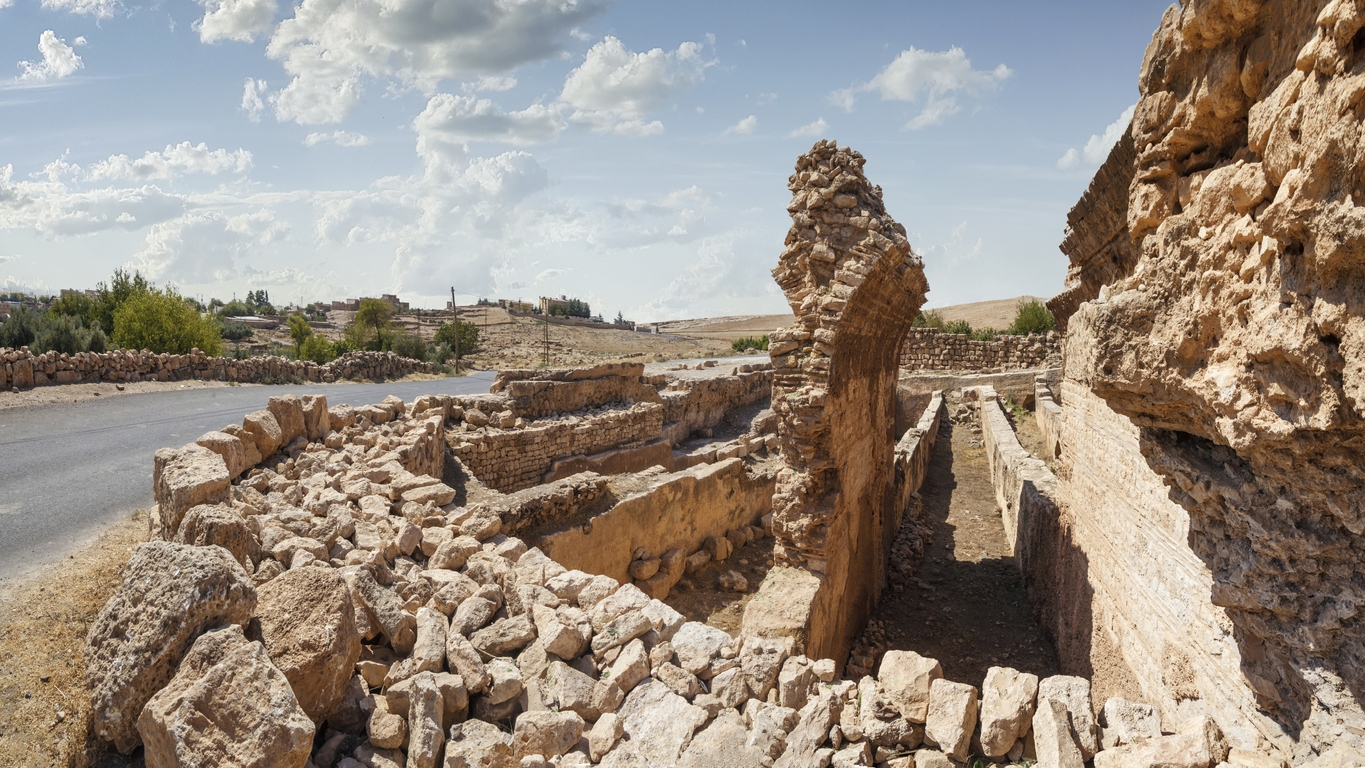Table of Contents
Mesopotamia was an ancient region found in the eastern Mediterranean bounded in the southeast by the Arabian Plateau and in the northeast by the Zagros Mountains. It corresponds to modern-day Iraq and parts of Iran, Kuwait, Turkey, and Syria. It is known as the Fertile Crescent and the cradle of civilization.[1] The first urban civilization ascended in Mesopotamia, and its timeline is, therefore, a primary example of the way ancient civilizations developed.[2]
Mesopotamian civilization has an exceptional place in world history, and if you are curious about the events that occurred back then, you’re in the right place. In this post, we are giving you the timeline for the ancient region of Mesopotamia.
Source: https://www.worldhistory.org/Mesopotamia/
Ancient Mesopotamia
It was in the Paleolithic era when humans first settled in Mesopotamia. People in the region lived in small settlements with circular houses by 14,000 B.C.E. After five thousand years, these houses created farming communities following the domestication of animals and the development of agriculture, popularly irrigation techniques that took advantage of the proximity of the Tigris and Euphrates rivers.
Mesopotamia is found in the region that is known today as the Middle East. It includes parts of southwest Asia and lands around the eastern Mediterranean Sea. It belongs to the Fertile Crescent, which is also an area referred to as the “Cradle of Civilization,” as we’ve mentioned earlier. This is due to the number of innovations that ascended from the early societies in the region, which are amid some of the earliest known human civilizations on earth.
The word “Mesopotamia” came from the ancient words “meso,” which means between or in the middle of, and “potamos,” which means river. It was situated in the fertile valleys between the Tigris and Euphrates rivers. At the present time, it is home to modern-day Iraq, Syria, Turkey, and Kuwait.[3]
The History of Mesopotamia
The history of the ancient region of Mesopotamia and the development of its civilizations can be understood better when divided into different periods. Below are the different periods of the history of the ancient region of Mesopotamia:
10,000 B.C.E. – Pre-Pottery Neolithic Age / The Stone Age
During this time, there was archeological confirmation of makeshift settlements and early signs of conflict between tribes due to fertile land for crops and fields for grazing livestock. From a hunter-gatherer culture, people during this time shifted to an agrarian one, and animal husbandry was increasingly practiced.
However, this was a slow process wherein people increased their reliance on resources they managed directly. But they still supplemented their diets by hunting wild animals. Agriculture helped increase the continuous settlement of the people. As more people settled, architectural developments gradually became more urbane, particularly in the construction of permanent houses.[1]
7000 B.C.E. – Pottery Neolithic Age
In this period, people began using tools and clay pots. There was also a specific culture in the Fertile Crescent that started to appear. Stone tools ad weapons became more erudite during this time. The economy during this period was mainly based on food production through animal husbandry and farming. People were also more settled, unlike in the Stone Age, where communities were more mobile. In the wake of permanent settlements, architectural advancements naturally followed, along with the developments in the creation of stone tools and ceramics.
5900 – 3200 B.C.E. – Copper Age
This period was also referred to as The Chalcolithic Period. It owes to the transition from stone weapons and tools to ones made of copper. This era also includes the Ubaid Period (5000-4100 B.C.E.). It was named for Tell al-`Ubaid, which is the location in Iraq with the greatest number of artifacts discovered. During this period, the first temples in Mesopotamia were built. In addition to that, unwalled villages were established from irregular settlements of single houses.
These villages gave rise to the urbanization process during the Uruk Period (4100-2900 B.C.E.) when cities rose, popularly in the region of Sumer. These include Eridu, Ur, Uruk, Nuzi, Kish, Nippur, Lagash, and Ngirsu. Uruk was often cited as the earliest city, but Ur and Eridu have also been suggested. At this point, Mesopotamia was the most densely urbanized region in the ancient world. The cities that were established along the Tigris and Euphrates rivers, along with the ones founded further away, have developed systems of trade that led to great prosperity.
The copper age also saw the invention of the wheel (3500 B.C.E.) and writing (3600 B.C.E.), both of which were introduced by the Sumerians. Kingships were also recognized as replacing the ecclesiastical rule. It was also in this era when the first war in the world was recorded between the kingdoms of Sumer and Elam, with Sumer as the conqueror.
The increased prosperity in the region gave way to the building of ornate temples and statues. There were also sophisticated pottery and figurines, as well as toys for children, such as wheeled carts and dolls. The use of personal seals to denote ownership of property and to be used as an individual’s signature was also developed in this age. Cylinder Seals back then can be compared to the modern-day identification card or driver’s license. In fact, losing the seal in this period would have been as significant as losing one’s credit cards.[1]
3000 – 2119 B.C.E. – Early Bronze Age
Bronze succeeded copper during this period as the material used in making weapons and tools. The rise of the city-state paved the way for economic and political stability, which eventually led to the rise of the Akkadian Empire (2334-2218 B.C.E.). The cities of Akkad and Mari rapidly grew, which were the two of the most prosperous urban centers of the time. The cultural stability needed for the formation of art in the region led to more intricate designs in sculpture and architecture. There were also lots of specific and momentous inventions in this age. These include the plow and the wheel and the chariot and the sailboat.
The first multi-national realm in the world was the Akkadian Empire of Sargon the Great. It was considered the world’s first multicultural empire with a central government.[3] Also, Enheduanna, Sargon’s daughter, was the first author of literary works known by name. A library called Mari contained more than 20,000 cuneiform tablets or books, and the palace there was referred to as among the finest in the region.[1]
Little is known about the background of Sargon. But according to legends, he had a similar origin to the Biblical story of Moses. At one point, he was an officer who worked for the king of Kish, and Akkadia was a city that he himself established. When the city of Uruk entered Kish, he took Kish from Uruk and was invigorated to continue with the conquest. Through military means, Sargon expanded his empire, conquering all of Sumer and moving into what we now know as Syria.
The trade beyond Mesopotamian borders increased under Sargon. Architecture also became more urbane, particularly the appearance of ziggurats or the flat-topped structures featuring a pyramid shape and steps.[3]
2119 – 1700 B.C.E. – Middle Bronze Age
An atmosphere conducive to trade and increased warfare was established with the expansion of the Assyrian Kingdoms of Assur, Sharrukin, Nineveh, Nimrud, and Dur, along with the rise of the Babylonian Dynasty. The fierce nomads who succeeded in falling the Akkadian Empire called the Guti Tribe, dominated the politics of Mesopotamia until they were defeated by the allied forces of the kings of Sumer.[1]
The city of Ur attempted to create a dynasty for a new empire in 2100 B.C.E. The king of the city, Ur-Namma, brought Sumerians back in control after the city of Uruk defeated the Gutians. Under his control, the first code of law in recorded history, called The Code of Ur-Nammu, appeared. However, in 2004 B.C., Ur-Namma was attacked by the Amorites and the Elamites and was defeated.[3]
1700 – 1100 B.C.E. – Late Bronze Age
The King of Babylon, named Hammurabi, who ruled from 1792 to 1750 B.C.E., rose from comparative insignificance to conquer the region and reign for more than forty years. His famous code of laws, the Code of Hammurabi, was among his many accomplishments. It was inscribed on the stela of the gods.[1] He did not just write laws but ensured that everyone in the empire followed the same legal codes and that governors in various areas did not enact their own. His laws also featured punishments to ensure that all citizens had the right to the same justice.[3]
At this time, Babylon became a leading center for academic pursuit and high accomplishment in arts and letters. However, this cultural center did not last as it was sacked and looted by the Hittites, who were then succeeded by the Kassites.[1]
In this age, the Kassite Dynasty became prominent. It was a tribe that came from the Zagros Mountains in the north and is thought to have originated in modern-day Iran. It led to a change in power and a growth of culture and learning after the Kassites conquered Babylon. When the Bronze Age collapsed, it was followed by the discovery of how to mine ore and utilize iron, which was a technology that the Kassites and as well as the Hittites made singular use of in war.
The Late Bronze Age also saw the start of the waning of Babylonian culture with the rise in power of the Kassites until they were overpowered by the Elamites and driven out. Eventually, the Elamites gave way to the Aramaeans, and the small Kingdom of Assyria started a series of successful campaigns. Under the rule of Tiglath-Pileser I, the Assyrian Empire was established firmly and prospered. After him, the empire was further consolidated under Ashurbanipal II.
At this point, most Mesopotamian states were either weakened or destroyed following the collapse of the Bronze Age, which led to a short “dark age.” [1]
1000 – 500 B.C.E. – Iron Age
During this time, under Tiglath-Pileser III, the Neo-Assyrian Empire saw its rise and expansion, as well as the meteoric rise to power and conquest of the Empire under the rule of great Assyrian kings, such as Sargon II, Sennacherib, Esarhaddon, and Ashurbanipal.[1]
In 722 B.C.E., a new dynasty started when Sargon II seized power. He modeled himself on Sargon the Great and divided the empire into provinces, and maintained the peace. His downfall came when the Chaldeans invaded the empire and made a separate alliance with the Elamites. Sargon II lost to the Chaldeans but changed to attacking Syria and parts of Gaza and Egypt, but eventually died in a battle against the Cimmerians from Russia.
From 681 to 669 B.C.E., Esarhaddon, the grandson of Sargon II, went on a destructive campaign of beating through Ethiopia, Egypt, and Palestine. He destroyed cities after looting them. However, he struggled to rule the expanded empire. He was a paranoid leader and suspected many people in his court of conspiring against him and had them killed.
From 669 to 627 B.C.E., Esarhaddon’s son, Ashurbanipal, was the final great ruler of the Assyrian empire. He faced a rebellion in Egypt and lost the territory to his brother, the king of Babylonia, whom he conquered. He was best remembered for making the first library of Mesopotamia, which is located in what we now know as Nineveh, Iraq. It is the oldest library, predating the Library of Alexandria by some hundred years.[3] However, due to repeated attacks on central cities by Babylonians, Scythians, and Medes in 612 B.C.E., the Empire suffered a decline as fast as its rise.
In this age, the tribes of Mitanni and the Hittites consolidated their powers, resulting in the rise of the Neo-Hittite and Neo-Babylonian Empires. During this period, King Nebuchadnezzar reigned over the Babylonian Empire following an invasion in 614 B.C.E by King Cyaxares of Media, pushing the Assyrians away.[3]
Nebuchadnezzar also destroyed Jerusalem in 586 B.C.E. and forced the inhabitants of Israel into the Babylonian Exile. In addition to that, he was also responsible for extensive construction in Babylon, building famous structures like the Great Ziggurat or the Tower of Babel, and the Ishtar Gate. In 539 B.C.E., the fall of Babylon to Cyrus II of Persia ended the Babylonian culture effectively.[1]
500 B.C.E. – 7th Century C.E. – Classical Antiquity
The majority of Mesopotamia became part of the Achaemenid Persian Empire after Cyrus II took Babylon in 539 B.C.E. This age saw a fast cultural revolution in the region, which included a number of changes, most notably the loss of the knowledge of the cuneiform script. In 331 B.C.E., the Hellenization of the culture and religion was brought about by the conquest of the Persians by Alexander the Great. However, even though he tried to make Babylon a city of significance, its glory days were left in the past.
In 198 C.E., between the Parthian Empire and the Sassanians, the Roman Empire established itself in the region. It improved the infrastructure of their colonies meaningfully through the introduction of better roads and plumbing. The Romans also brought Roman Law to the land. Nonetheless, the region was repetitively caught up in the wars that innumerable Roman emperors compensated, initially with the Parthians and then Sassanians, over the regulation of the land.
When Alexander the Great died, the region was taken control of by Seleucus I Nicator, who founded the Seleucid Empire. This empire ruled until 63 B.C.E. when the land was conquered by the Parthians. The Parthians were in turn dominated by the Sassanians, who founded the Sassanian Empire. They honored the legacies of earlier Mesopotamian civilizations and preserved their contributions.
In the 7th century C.E., the ancient culture of the region, which was preserved by the Sassanians, was distressed by the downfall of Mesopotamia by Muslim Arabs. This resulted in the unification of law, language, culture, and religion under Islam. Some facets of the culture were retained, but the history of ancient Mesopotamia ends.
At the present time, the great cities that once rose along the Tigris and Euphrates rivers are mainly unexcavated hills or wrecked bricks on dry plains. The region of the Fertile Crescent has gradually diminished into areas resembling wastelands because of human factors, including overuse of the land through agricultural pursuits or urban development and climate change.[1]
Important Cultural Contributions of Ancient Mesopotamia
Below are some of the most important cultural contributions of ancient Mesopotamia to the world:
Learning and Religion
Mesopotamia was known as a seat of learning, and intellectual pursuits were highly valued in the ancient region. Their schools taught reading, writing, medicine, astrology, law, and religion, which are still being taught in schools today.
Jobs
In ancient Mesopotamia, both men and women work, just like in the modern world. Since the region was fundamentally an agrarian society, the main occupations were raising livestock and growing crops. But in addition to that, other jobs include those of the healer, the scribe, potter, weaver, artisan, teacher, fisherman, priest, and shoemaker. Women back then enjoyed nearly equal rights. They could own land and businesses, make contracts in trade, and file for divorce.[1]
Buildings
Simple homes in Mesopotamia were made from bundles of reeds lashed together and inserted into the ground. More complex homes, on the other hand, were made of sun-dried clay brick. Cities and temple centers, along with their famous ziggurats, were all made using oven-baked bricks of clay that were then painted.
Government
The role of the king in Mesopotamia was established around 3600 B.C.E. They dealt directly with the people and made their will clear through laws that they made, just like how most governments today work. Before the concept of a king, priestly rulers dictated the law based on religious precepts. They received messages through signs and omens. The king, on the other hand, still honors the gods but was also considered powerful enough to be able to speak their will using his own voice.[1]
The Legacy of Ancient Mesopotamia
Today, the legacy of Mesopotamia endures through many of the most basic parts of modern life. Some of these include urbanization, writing, the wheel, mathematics, astronomy, irrigation, wind power, animal husbandry, agricultural developments, and more. It is undeniably true that the contributions of Mesopotamians to the world culture do not end with them. They also influenced the cultures of Egypt and Greece through trade and cultural diffusion. These cultures also impacted the culture of Rome, which set the norm for the development and spread of Western Civilization.[1]
Largely, Mesopotamia and Summer gave the world some of its most continuing cultural facets. Even though the cities and great places are long gone, the heritage of ancient Mesopotamia continued into the modern era.
References
[1] Mark, J. J. (2018, March 14). Mesopotamia. World History Encyclopedia. Retrieved May 17, 2022, from https://www.worldhistory.org/Mesopotamia/
[2] Hirst, K. K. (2019, December 6). Timeline and advances of the Mesopotamian Society. ThoughtCo. Retrieved May 17, 2022, from https://www.thoughtco.com/introduction-to-ancient-mesopotamia-171837#toc-mesopotamian-timeline
[3] History.com Editors. (2017, November 30). Mesopotamia. History.com. Retrieved May 17, 2022, from https://www.history.com/topics/ancient-middle-east/mesopotamia

